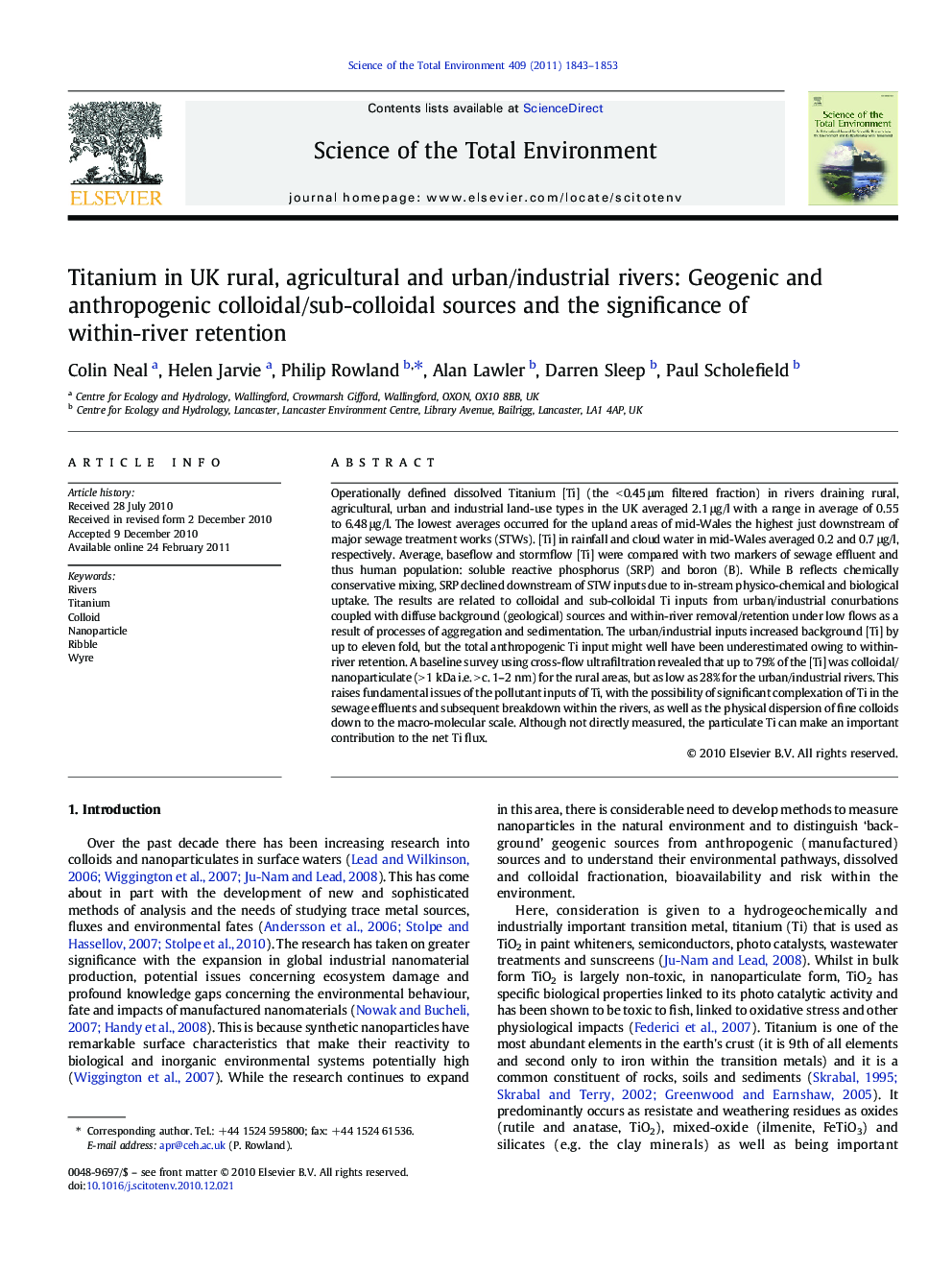| کد مقاله | کد نشریه | سال انتشار | مقاله انگلیسی | نسخه تمام متن |
|---|---|---|---|---|
| 4430223 | 1619852 | 2011 | 11 صفحه PDF | دانلود رایگان |

Operationally defined dissolved Titanium [Ti] (the < 0.45 μm filtered fraction) in rivers draining rural, agricultural, urban and industrial land-use types in the UK averaged 2.1 μg/l with a range in average of 0.55 to 6.48 μg/l. The lowest averages occurred for the upland areas of mid-Wales the highest just downstream of major sewage treatment works (STWs). [Ti] in rainfall and cloud water in mid-Wales averaged 0.2 and 0.7 μg/l, respectively. Average, baseflow and stormflow [Ti] were compared with two markers of sewage effluent and thus human population: soluble reactive phosphorus (SRP) and boron (B). While B reflects chemically conservative mixing, SRP declined downstream of STW inputs due to in-stream physico-chemical and biological uptake. The results are related to colloidal and sub-colloidal Ti inputs from urban/industrial conurbations coupled with diffuse background (geological) sources and within-river removal/retention under low flows as a result of processes of aggregation and sedimentation. The urban/industrial inputs increased background [Ti] by up to eleven fold, but the total anthropogenic Ti input might well have been underestimated owing to within-river retention. A baseline survey using cross-flow ultrafiltration revealed that up to 79% of the [Ti] was colloidal/nanoparticulate (> 1 kDa i.e. > c. 1–2 nm) for the rural areas, but as low as 28% for the urban/industrial rivers. This raises fundamental issues of the pollutant inputs of Ti, with the possibility of significant complexation of Ti in the sewage effluents and subsequent breakdown within the rivers, as well as the physical dispersion of fine colloids down to the macro-molecular scale. Although not directly measured, the particulate Ti can make an important contribution to the net Ti flux.
Research Highlights
► Filtered Ti in agricultural, urban and industrial UK rivers described.
► Highest concentrations occur just downstream of STWs.
► The urban/industrial inputs increased background [Ti] by up to 11 fold.
► Anthropogenic Ti input lowered by within-river retention.
► Up to 79% of Ti colloidal/NP for rural, down to 28% for urban/industrial rivers.
Journal: Science of The Total Environment - Volume 409, Issue 10, 15 April 2011, Pages 1843–1853